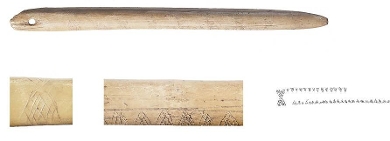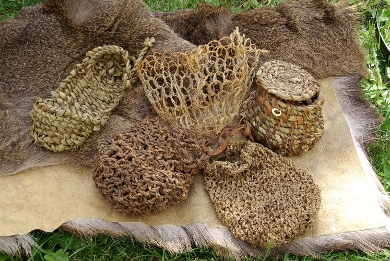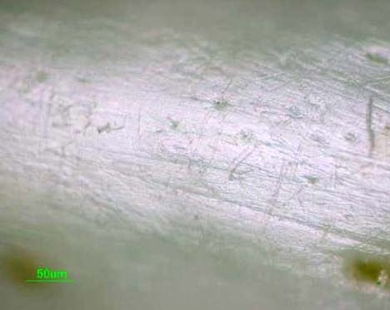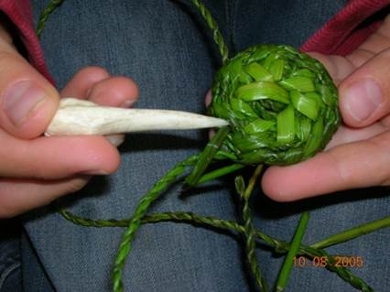Research project
Plant fiber processing in the past
Basketry, cordage and textiles made of plant fibers or bark are rarely preserved in the archaeological record. By means of experimental archaeology and microwear analysis, we obtain indirect evidence about this important craft.
- Contact
- Annelou van Gijn
Hidden traces of plant based crafts
Basketry, cordage and textiles made of plant fibers or bark are rarely preserved in the archaeological record. By means of experimental archaeology and microwear analysis, we obtain indirect evidence about this important craft.
Mesolithic net making?

During the excavation of the late Mesolithic site of Hardinxveld-Giessendam De Bruin a perforated bone needle was found. It was made on the ulna of a swan and decorated with a geometric pattern. This needle displayed a very developed polish from contact with plants.
With a replica of such a needle a loose net of twined nettle fibers was made, using the so-called knotless netting technique: the wear traces that developed on this experimental tool closely resembled those on the archaeological artefact, making it likely that the latter tool was used in a similar way.




Did the earliest farmers in the Netherlands process flax with flint tools?

At Linear Bandkeramik sites of the earliest farmers in the Netherlands (c. 5300 BC) we frequently find blocky, unretouched pieces of flint (called quartiers d’orange or débitage en frites) that used to be discarded as “waste”. Microwear analysis, however, has shown them to be consistently used to scrape an unknown material that produced an enigmatic two-sided polish usually referred to as “polish 23”.
Despite extensive experimentation by Van Gijn and others, this type of polish has still not be fully reproduced. The closest match is obtained by scraping plant fibers like flax or nettles.





Current research
Experiments with different plant based crafts continue, involving both stone and bone tools. There are still a number of riddles to solve: wear traces that seem to be caused by contact with plants, considering their characteristics, but that we cannot replicate. One example are the transversely orientated siliceous plant polishes on regular, unretouched blades known from several Dutch Late Mesolithic wetland sites. So far we do not know which activity (or activities) caused these traces. In collaboration with dr. Vogelsang of the Textile Research Centre in Leiden, we will explore the interconnectivities between textiles and tools.
